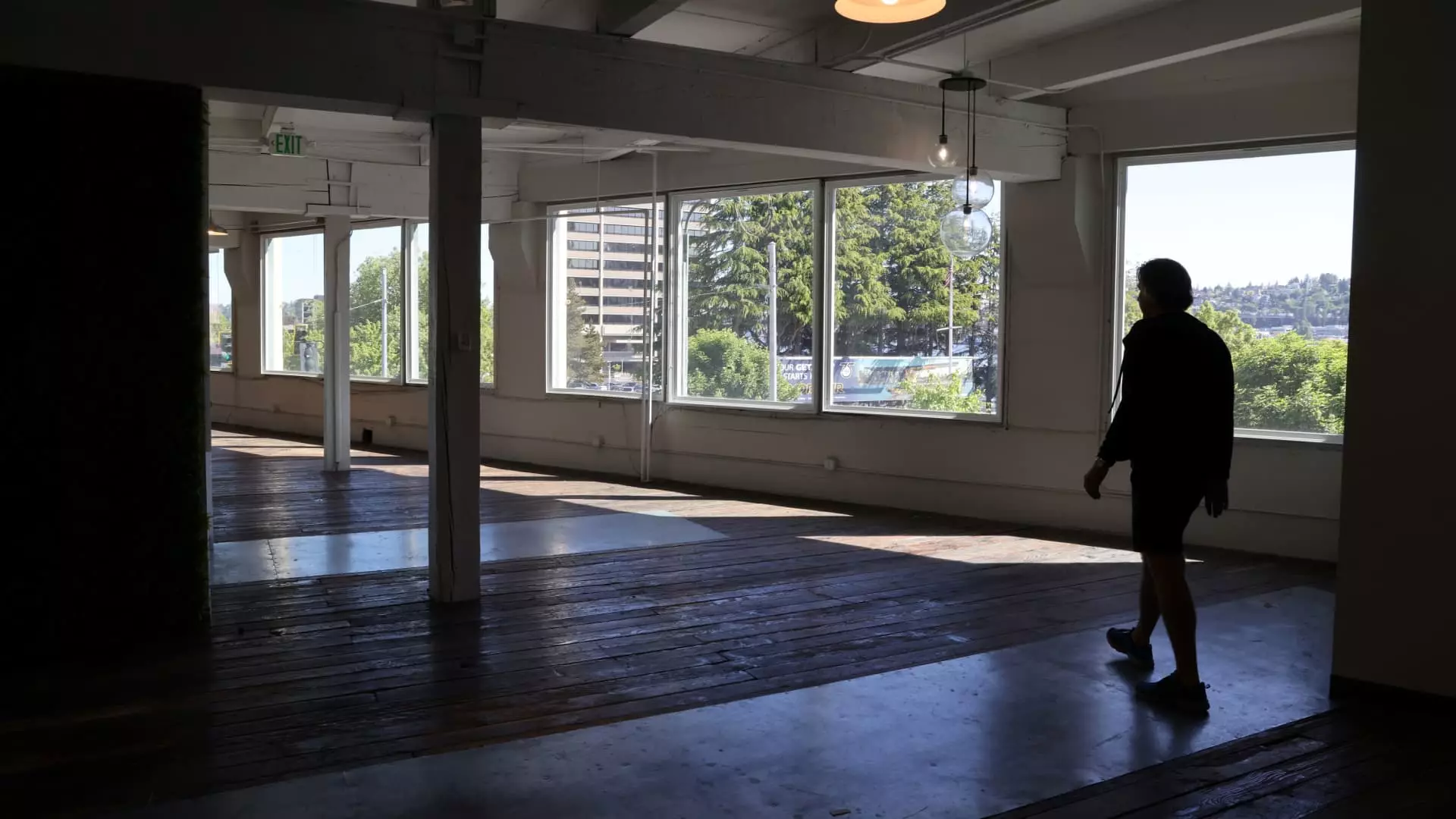The narrative surrounding the U.S. office market has undergone a seismic shift recently, revealing deep-seated issues that the pandemic has exaggerated rather than caused. After years of uncertainty and tumult, the landscape has reached a pivotal moment. For the first time in approximately 25 years, the trend indicates that office conversions and demolitions are outpacing new construction, signaling a potential paradigm shift in how we perceive and utilize commercial spaces. This isn’t merely a blip in the market; it reflects a profound cultural change as organizations grapple with remote work’s enduring effects.
CBRE Group has presented findings showing that a staggering 23.3 million square feet of office space in the largest 58 U.S. markets is slated for demolition or repurposing by the year’s end. In stark contrast, developers are expected to finish the construction of only 12.7 million square feet during the same period. This net reduction may appear marginal, but it serves as a harbinger of an evolving market. As a liberal perspective would suggest, this isn’t just an opportunity for landlords to breathe a little easier; it’s a poignant reminder that adaptability and resilience are vital virtues in modern commerce.
Remote Work: The Catalyst of Change
The remote-work trend, driven initially by necessity during the pandemic, has now morphed into a permanent fixture of the working world’s fabric. Office vacancies soared to alarming rates, clambering to around 19%, exposing glaring vulnerabilities within the commercial real estate sector. Organizations are beginning to mandate tighter in-office attendance policies, but this adjustment doesn’t negate the impact that remote work strategies have had on employee preferences and expectations.
The return to traditional office environments should not be viewed through a naive lens. Yes, companies are recalling staff, but many employees are approaching this return with a more discerning outlook. The abundance of available jobs allows them to be choosy, demanding flexibility and better work-life balances. It’s crucial to acknowledge that this shift has placed organizations at a pivotal crossroads. They must balance increasing demands for in-person attendance with the knowledge that employees may reject a return to the cookie-cutter office life of yesteryear.
The Gradual Recovery and Its Implications
While it’s tempting to frame the revitalization of the office market as auspicious, the truth is more nuanced. Although vacancy rates could potentially decrease as more obsolete spaces are removed, any measurable recovery will likely occur slowly. Positive net absorption stats for the recent quarters point to an uptick in demand, yet this recovery coexists with a lingering cautiousness. The rise in office-leasing activity, up 18% compared to the previous year, is indeed hopeful, but it might not be sustainable without addressing underlying structural issues.
The allure of prime office locations and Class A spaces, where rents show signs of stabilization, should not eclipse the reality faced by many landlords of outdated properties. The long-term success of this sector hinges on intelligent redesigning and repurposing, facilitated by a vision for urban environments that prioritizes livability and community engagement over mere profit margins.
Rethinking Urban Landscapes
The capacity for office buildings to morph into multifunctional hubs signals a brighter potential for urban centers. Over 85 million square feet of office space is poised for conversion, heralding a new era where commercial real estate can fuel residential vitality. The leap from office to multifamily residences isn’t merely a trend; it is an endeavor that embodies a fundamental shift toward making cities more functional and inclusive.
However, challenges loom large. The dwindling availability of suitable buildings for repurposing, paired with soaring construction costs and financial complications, presents formidable barriers. While the conversion trend offers exciting opportunities for community revitalization, we must also be critical of its pitfalls. The narrative must not be dominated solely by optimism but should also recognize the merits of thoroughly evaluating and addressing the complexities inherent in these transformations.
The current reshaping of the office market encapsulates the broader societal shifts driven by evolving work dynamics, and it serves as both a challenge and an opportunity. As we navigate this transformational period, maintaining a liberal perspective—one that values innovation, inclusivity, and community engagement—will be critical for crafting a sustainable future in urban development.

